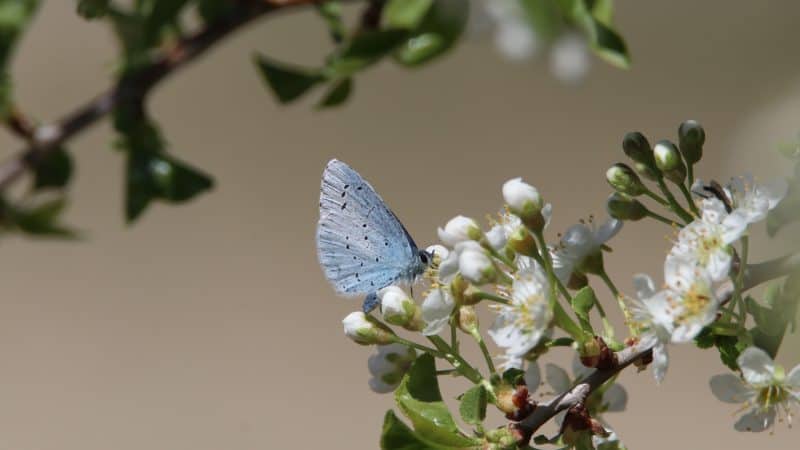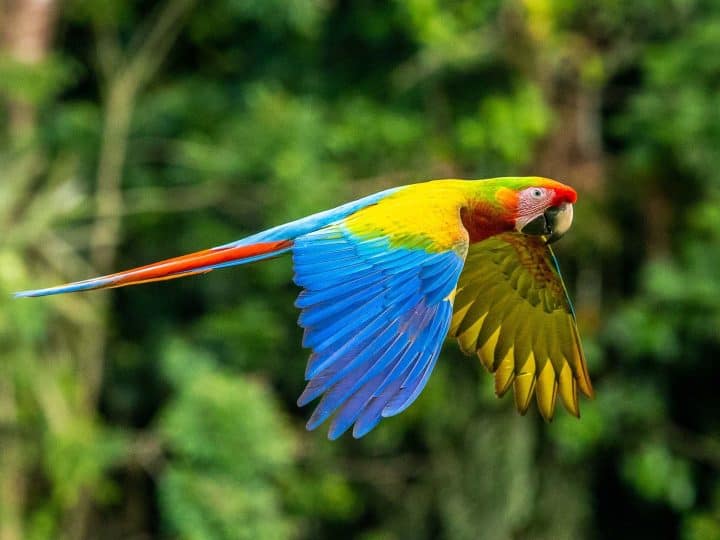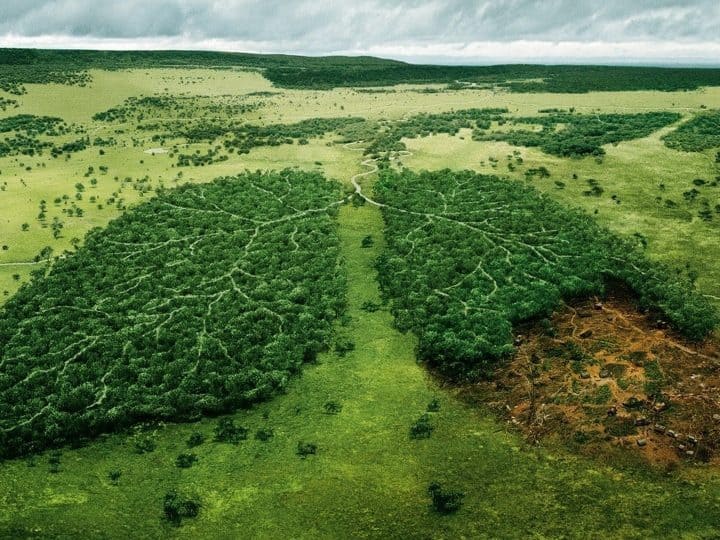
Top Journal Ecology
Environmental degradation is a common term in today’s world that has surfaced in everyday conversations.

Trending Ecology and Evolution

Check Out Latest Updates

Top Stunning Ways To Save The Environment From Destruction
Environmental degradation is a common term in today’s world that has surfaced in everyday conversations. Humans need to live in harmony with our environment, but over the last decade, humans have only embraced the path to slowly and significantly destroy our planet. Yet, the environment plays a significant role in determining the health of our ecosystem and environmental biodiversity.
According to the UN Decade of Biodiversity, we are in a crucial decade of environmental degradation and far from achieving the targets. However, the negative trends implemented show that we have to do much more than talk about these environmental problems, some of which are mentioned in this article.
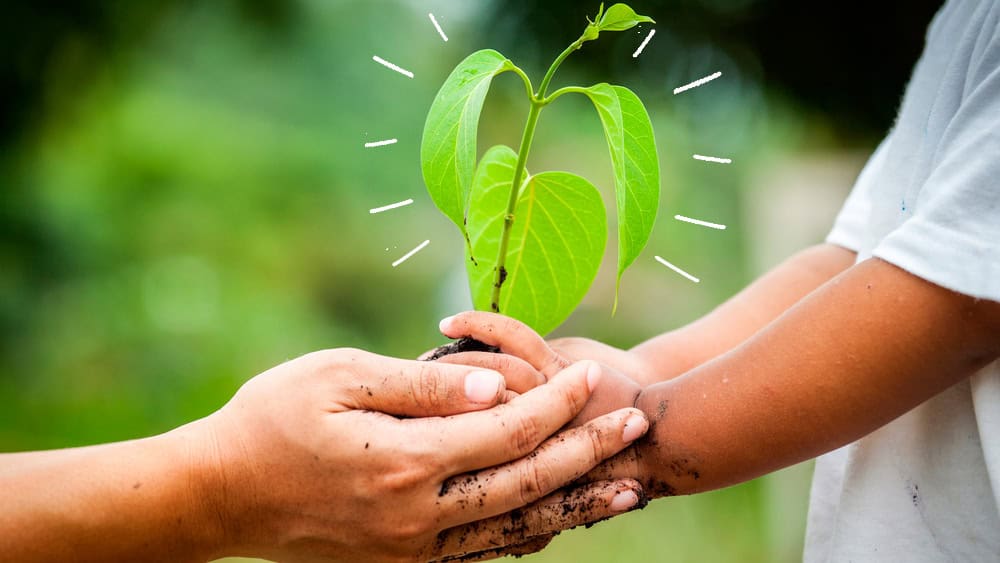
Volunteer with different environmental organizations
The increasing need for sustainable environmental changes has led to the development of many organizations with a prime focus on improving the quality of our environment. When a person becomes a part of such organizations, they are headed in the right direction to make a significant improvement in conservation, which can go a long way! It also helps people lead by example, as every simple step in the right direction matters in improving environmental conditions. There are several ways for people to get involved in these organizations – by running and being a part of their campaigns, fundraising events, and offering help like planting saplings, beach clean-ups, etc.
Reduce the use of paper
Reduce, reuse and recycle are the three magical R’s which can significantly improve our environmental crisis. For example, old textbooks, novels, and new books can be recycled or donated to the needy, reducing their imprint on society. Similarly, reusing old materials, especially paper, will help reduce the demand for raw materials and paper production by cutting trees. Using technology for tests, e-exams, etc., will also help reduce paper and use it only if necessary. Also, by using technology, we can shift from paper-based activities and use gadgets and intelligent technologies.
Saving resources
Everyone has learned in school that only 0.03% of the water is available for use and drinking. Hence, environmentalists often stress conserving water as much as possible. Taking shorter showers, turning off the tap when not in use, and other small steps can help save gallons of water. These adaptations will also help in reducing energy consumption and preserving our resources.

Using sustainable products
Now, everyone knows that plastic is one of the most dangerous components, which leads to soil and water pollution. When buying a product, people need to be aware of the harmful effects after their disposal. One way to reduce plastic consumption is by using cloth bags when shopping. Many companies have also used cloth or paper bags to replace more eco-friendly polythene covers. People can also switch to wooden brushes, combs, and other products made of sustainable materials to reduce the footprint of plastic in the environment.

What Is The Role Of Taxonomy In Biodiversity Conservation?
The insect kingdom has a variety of insects and arthropods, and it can be difficult for non-specialists to distinguish among the different kinds. This is where the field of taxonomy comes into play.
Taxonomy is the branch of science that helps classify and name different organisms. It has helped scientists and people worldwide with biodiversity conversation for centuries. Also, the field helps us understand the crucial relationship between different species of animals and their relationship between themselves and humans.
What is biodiversity conversation?
Biodiversity refers to the foundation of the ecosystem, which involves the presence of different animal species, including humans. For centuries now, biodiversity has been known to play a crucial role in maintaining a stable ecosystem and helping maintain a healthy balance. Biodiversity conservation prevents species’ extinction and helps understand the cycle better to understand the relationship and communication between different species. Along with environmental benefits, biodiversity conservation also helps develop new-age technologies and opens a new area in the world of science.

The role of taxonomy in biodiversity conservation
The taxonomy provides a standardized system of identifying and naming different species of animals and their relationship between themselves and nature. It is one of the best ways for experts to communicate with the different classes of animals and species and track their abundance and decline over a period of time.
It helps experts in the field understand and incorporate the revolutionary relationship with different species of animals. It is a crucial aspect of the study that helps understand animal behavior, their response to different environmental changes, and how it can be improved over time to preserve the species and tailor the essentials accruing to their needs.
Apart from this, they are also valuable for basic research and conservation efforts which help the general public by providing pertinent information in identifying different organisms. This means that classifying and naming these animals using the methods helps educate people about the environment and how taking measures helps in biodiversity conservation.
According to various studies conducted on the subject, this field is also essential for different border authorities and agencies to detect, control and manage Invasive Alien Species, also called IAS. The identification and classification can only be made when the species are rightly identified and named. Misidentification of the classification of species can lead to an unnatural disaster that can be irreversible. Therefore, many countries are investing money in an increased capacity building which is essential to monitor invasions and provide the proper methods to increase the significance of this field. The field of taxonomy also helps determine the growth of different species of animals from one geographic area to another and helps in their conservation.

Ways To Add Biodiversity To Your Garden
Biodiversity refers to the presence of plant and animal life in a garden, which helps increase the beneficial characteristic and adds the right kind of attractiveness to your garden. There are several ways to enhance biodiversity in your garden, including different ways to enhance genetic biodiversity. In this article, we have jotted down ways by which you can enhance biodiversity in your garden.
Adding a butterfly garden
Butterflies are an attractive garden feature that adds additional color and movement. However, if you need colorful butterflies to move around your garden, you will also need plants for them to feed on. In addition, it is also essential to ensure that pesticides are not used to help the plants grow, as they might kill butterfly larvae.

Attracting birds to the garden
It is essential to have food and shelter in the garden if you need birds to stay in your garden. Hence, planting more shrubs and small trees is essential to ensure that birds are attracted inside the garden. Native plants are the most critical choices. In the winter, seeds from different herbaceous perennials are also a good option. People can also keep it until early spring or late winter to enhance the way their garden looks.
Adding pollinator garden
Apart from honeybees, other pollinators are attracted to the flower’s nectar. Garden owners must create an environment that is useful for all pollinators and other hosts. Again, it is essential to be aware of pesticides and insecticides which might otherwise ruin the crops and other plants and shrubs.
Adding a water pond to the garden
Birds and other living organisms are always in search of food and water. Therefore, they are primarily attracted to the presence of water and water bodies. Hence, by having a running or stagnant pond or bubbling water in the arena, it can be beneficial to attract birds and also provide a habitat for them to thrive on. Furthermore, it will also attract different aquatic life like frogs, fishes, dragonflies, and others.
Adding a rock pile or snag
In addition to small water bodies like ponds, adding piles of logs and wood will also help in attracting different forms of insects and helps enhance biodiversity. For instance, a dead tree trunk can be added as a snag, attracting woodpeckers and other birds that will make a home in the dead trees. This also includes owls and haws. However, it is also essential to check for potential danger. When there is no risk to humankind, we might allow birds and other biodiverse creatures to make it their home.
Adding a tree house
Tree houses are some of the best inventions which help in attracting a variety of birds and other animals. They are also some fun projects to work on with friends and family.

Things To Know About Paleontology
Paleontology is the study that refers to the history of the earth, which is well-respected in the fossil remains and deposits from millions of years. It is a broad multidisciplinary field that encompasses other disciplines like anthropology, biology, geology, etc. The people who study this branch are called paleontologists. They generally study the fossil that remains under the ground, which helps understand human evolution and other organisms with geological history.

If you have watched Jurassic Park, you know what we’re talking about! However, it is not just about dinosaurs but much more than that – it involves the study of fossil remains of other animal species and ancient humans.
This article has mentioned some important points about paleontology that are important to know!
It comprises different subdisciplines.
As mentioned above, this multidisciplinary field is rich in study and information which comprises different fields like:
- Micropaleontology which includes the study of microscopic fossil remains
- Paleobotany which includes the study of different plant fossils
- Palynology which includes the study of spores and other pollen demotions produced by various plants which land on other species or plants
- Invertebrate paleontology, which deals with the study of fossil remains of invertebrates, and so on
It is a relevant field.
While some might argue about the existence of the field, others find it equally necessary to study the scientific history of the world we live in! It helps us better understand the life that existed on planet Earth millions of years ago and helps predict other species’ life spans. It allows us to place other living organisms in nature’s evolutionary and geological context. This allows us to study the significant characteristics of other living organisms and their biological significance to the environment.
It provides an excellent career prospect.
Paleontologists are of different types, and professionally, they can vary from people teaching in schools to playing vital roles in the discovery of new species which existed millions of years ago. A majority of them work in the field of academia, and many others also opt for different branches like geological survey, commercial oil, gas, and coal sectors for different companies, geoscientists, oceanographers, museum curators, and many more.

The field’s career prospects provide many growth opportunities for people who possess research and analytical skills, which also plays a significant role in the sector.
A Ph.D. is a must
For people willing to pursue the career option, post-graduation in the field is a must. Over the years, different universities have recognized and embraced the field’s existence. Also, they offer different graduation and post-graduation programs to help students learn and understand the past of the earth and other species which lived on it.

The Significance Of Entomopathogenic Nematodes In Pest Control
When you dig soil, you come across various tiny insects and small worms often running around inside the soil, and you see millions of them. These tiny creatures are terms as entomopathogenic nematodes. They are a class of parasites that readily kill a wide range of pest insects. Due to their parasitic nature, they are widely popular in the entomology and plant pathology industry as the biological controlling factor. Some are microbial, while others are easily visible to the naked eye. Most of these nematodes are the most popular biocontrol agents that prevent crop destruction and beneficial plants.
The use of Entomopathogenic Nematodes In Pest Control
As mentioned above, one of the primary advantages of these Entomopathogenic nematodes is pest control, and they do not harm other crops and pests. This means they are not only used as biocontrol and pest control agents but can also be used as pollinators to help increase the population of flowering plants and create hybrid fruits and flowers without causing any harm to the plant or the crop. In addition, they also do not leave a chemical residue when they act on the pests, making it one of the best options for agriculturists to work on their crops.

Entomopathogenic Nematodes possess the ability to control the growth of pets in different species. While some nematodes work in the birth stage of larvae to kill eggs of the pests, others directly attack the controlling insects that lay these eggs. Depending on the type of pest growth, they can be used in different stages of pest infestation, making them one of the most versatile and highly in-demand tools for pest control methods.
Nematode biopesticides
Since these species of worms are soft-bodied, they are sometimes obligated to be facultative parasites of insects. They occur in the soil naturally and naturally trace their host depending on the concentration of carbon dioxide, their vibrations, and other chemical cues. These naturally help develop different types of pesticides and other insecticides in various pest management programs. They are also sued safely in developing different biopesticides which curb the growth of pests on different plant species.
Sometimes, these nematodes are synthetically grown according to the requirements of crops and the way the pests infest these crops and develop artificial methods to control their growth in the agricultural field.
Key takeaway
Different methods of pest control are necessary to protect plant species and kill the naturally occurring pests in different areas of the environment; Entomopathogenic Nematodes, both naturally occurring and artificial, are used safely and effectively to get the job done. Due to their advantage, they are used as natural pest controllers by different agriculturists all over the world.

Easy Steps That Will Help In Bringing Biodiversity Through Your Garden
There are various types of biodiversities on the earth, from plants to microorganisms and mammals. Interdependent on one another, it will help bring and maintain world biodiversity. However, many non-sustainable methods are essential for increasing and maintaining the biodiversity in the environment. Since each species plays a crucial role in maintaining the proper ecological balance in nature, it is essential to follow the proper sustainability practices.
Planting the right trees
Planting trees is one of the first steps in increasing the biodiversity of your garden. It is important to know the theme of your garden to know what is essential and what plants will help make it look wonderful. Among all the other plants and herbs, the native varieties are one of the best in keeping wildlife and plants in the right place.
Providing the right amount of water
Since there is a variety of plants, each plant requires the amplest amount of water which will help them keep fresh throughout its lifetime. Therefore, it is especially important to water the flowering plants correctly as they will help keep them fresh and youthful.
Creating a compost
Composting is a natural way of recycling waste in the yard. It provides an excellent way for insects and other organisms to breed on them and provide a habitat for creating the best natural manure or proper growth of plants. You can create compost with kitchen and other garden waste materials and leave it over time for microorganisms to act on it and help different plants grow.
Planting a variety of flowers
One of the best ways to attract pollinators is to plant the best-looking plants in the garden, which will attract bees, butterflies, and other pollinators to enhance the flowering capabilities of the plant. Also, generating a variation in plats makes it easy to make it attractive. However, spending money on the different types of manure needed for different plants is essential.

Leaving a wild patch
It is best to leave an empty patch of land or a small portion of it for wildlife and biodiversity to breed—the greater the population of animals and plants, the better the rate of biodiversity in your garden.
Key take away
Creating biodiversity in your backyard or garden is the most straightforward way to keep it attractive . But most of the problem arises while maintaining and learning ways to extend it. By following the steps mentioned above, you will not only be able to enhance the richness of your garden. Still, you will also help expand the growth of different communities of plants and animals to strengthen a healthy ecosystem.

Arthropod Biodiversity: Ecological And Functional Aspects
There are various groups and species of animals in the animal kingdom. Arthropods are among them, referring to a family of insects, crustaceans, spiders, and other species. They are a group of animals characterized by exoskeletons, joint legs, and other features that provide them the ample support needed.
These insects are crucial in maintaining the ecosystem’s balance as pollinators. Pollinators are insects or groups of animals that carry pollen grains from one flower to another and help in the flowering process. In this article, we have mentioned the ecological and functional aspects of arthropods.
The ecological aspect of arthropods
It is essential to know that anthropoids are present in almost every habitat, from the deepest oceans to the highest mountains and sunniest deserts. As mentioned above, they play a crucial role in maintaining the balance in the ecosystem as both producers and consumers. For example, insects like honeybees, beetles, and butterflies are essential insects that help pollinate and fertilize flowering plants.
Arthropods are also classified as decomposers like flies and beetles, which help break down the organic matter in the environment and help reach the nutrients back to the ground. In addition, they also serve as food for other insects, other arthropods, and species of birds and mammals.

Since a diverse variety exists, each is essential to maintain the ecosystem and has an inevitable environmental consequence. For instance, if there is a decrease in the number of arthropods helping in pollination, there will be a decrease in the population of flowering plants, which can have an imbalance in the ecosystem. Similarly, a shortage of decomposing arthropods will also lead to a degradation in the nutrition factor of the ecosystem.
The functional aspect of arthropods
Not only do these classes of insects help maintain the ecological balance, but they are functional in different industries. One of the most famous examples is that of the honeybees, which help produce raw honey and silkworms used to produce pure silk. Besides, arthropods are also utilized in other industries like pest control. Some of them are useful in preventing the crops from an infestation of pests; hence, they are used to make biological agents to prevent crops in the garden from the growth of harmful pests.
Recently, they are also being used as a subject for scientific research to study their behavior in different filed. For example, studying their behavior has opened a new area of science that helps understand the social behavior between different insects and their mode of communication. In addition to this, their anatomy has also helped develop new industries and technologies. Behavior has opened a new area of science that helps understand the social behavior between different insects and their mode of communication. In addition to this, their anatomy has also helped develop new industries and technologies.

An Overview Of Entomology And Its Significance
Entomology is zoology’s branch that studies insects, their morphology, anatomy, and other characteristics. It is another field of science that has also helped entomologists study the characteristics and behavior of millions of insects worldwide.
There are billions of species of insects on this planet that have survived for millions of years. While some are extinct, others are abundant. This shows that insects and arthropods have a large composition in the animal kingdom and are primarily found in every part of the earth.
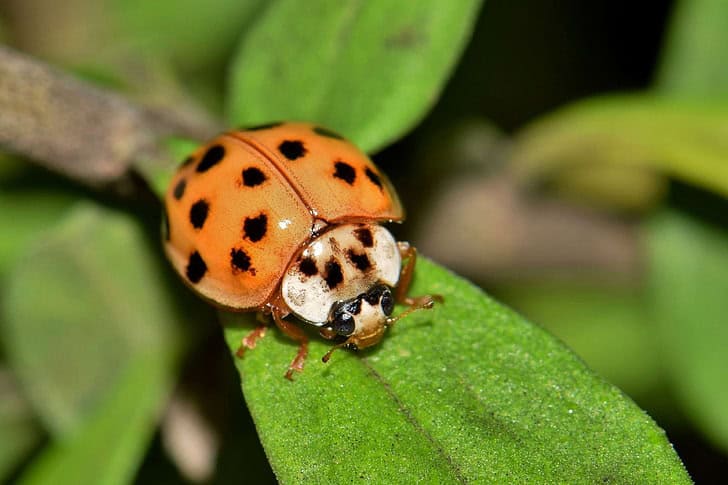
Significance of entomology
Entomologists have contributed significantly to studying the various applications of insets in agriculture, public health, and forestry. As mentioned above, this plant has billions of insects, some poisonous, others non-poisonous, and non-harmful. However, apart from humans, insects also seriously threaten different plants and animals. Therefore, entomology plays a crucial role in understanding insect behavior and the relationship between food, humans, their biodiversity, and the environment.
Agriculture
Depending on the type of insect and the crop they act on, they’re mainly divided into two categories- the ones which pose a threat to plants and crops and the others that are beneficial in controlling pests. Entomologists help study the different characteristics of insects, which helps develop different pest control strategies.
Forestry
While some smaller insects attack shrubs and small plants, others attack trees and cause severe threats to wildlife and the flora in a forest. Entomology helps determine the different species of insects that cause harm to the forest and also understand the role of insects in the forest ecosystem.
Public health
It is a no-brainer that insects transfer diseases like dengue, malaria, Lyme disease, fever, etc., and also play an essential role in transferring diseases. Therefore, entomologists need to study their biology and behavior and understand different mechanisms and strategies to fight against them.
Applications of entomology
Apart from the significance of entomology in the three major fields, there is also a more comprehensive range of applications like the ones mentioned below.
Environmental science
Insects are sensitive to changes in their outside environment, like rainfall, temperature, moisture, humidity, etc., and their growth patterns depend on these factors. In the field of environmental science, insects provide ways to understand the different ecological issues, the effects of deforestation and other conditions.

Forensic entomology
As surprising as it sounds, insects play a significant role in criminal investigations. It helps investigators with the different human remains, their body’s exposure to different elements, the reason for diseases, and other important information.
Key Takeaway
Entomology, although essential in different fields, is still a growing field in the branch of zoology, which helps determine the role of insects in different ecosystems and their effect on humans and animals. It is also a branch that helps deal with different strategies to protect humans and other organisms.

Guide To Ethology: Exploring The Study Of Animal Behavior
When we see different animals performing certain acts, like running away from predators, making noises to communicate, or doing a waggle dance, we often find it ‘weird.’ But, their behavior patterns keep them safe from their predators and protect their offspring. There is a separate study dedicated to learning animal behavior, termed ethology.
Ethology is the scientific study of animal behavior which encompasses the behavior of different animals, from reptiles to fish, insects, and mammals. The people who work in this field are called ethologists, who dedicate their research to understanding the ecological and evolutionary factors that play a significant role in animal behavior. They also extend their research and study to understand the neural and cognitive processes that influence animal behavior.

According to ethologists, natural selection is one of the principal factors influencing animal behavior. This means the adaptation process of animals in different environments, their reproduction, and their habitat often play a crucial role in developing stimuli and influencing their behavior over time. For instance, various species of birds and mammals develop different mating patterns to attract quality mates and enhance the success rate of their reproduction process.
Proximate and ultimate causation
Proximate and ultimate causation is one of the key concepts of ethology, which refers to the immediate psychological behavior of animals that is directly associated with external and environmental factors. For example, a bird singing is a sign of calling for a mate for reproduction. However, its behavior is based on the neural and hormonal activity in its brain. Therefore, ultimate causation is defined as the purpose of the behavior of animals and birds. In this case, the behavior is represented to enhance the chances of reproduction and the success rate.
Methods of ethology
Many ethnologists all over the world have various patterns of study which influence their case of study of animal behavior. One of the most common methods is field observation. In this method, they study and observe the animals in their natural habitat and learn the reason behind every movement.
Another important method is through laboratory observations of animals under study and the various factors which have a drastic impact on their behavior, like:
- Reproductive status
- Social environment
- Diet
Comparative psychology is a tool that helps compare the different behavior in animals, gain insights into their movements, and better understand their behavior in a systematic pattern. For example, many ethologists also study the behavior of different species of primates to gain insights into the evolution and the change in human behavior.

Importance of ethology
Apart from the advantages mentioned above, ethology also helps in different fields like the following:
- Pet training to better understand the behavior of their pets
- Human safety, which helps people keep themselves safe during wild encounters
- Animal welfare and conservation to protect vulnerable species

Best Books About Trees and Nature
Trees and forests are some of the most exciting things in the world. They’re endlessly fascinating, and there’s much to learn about how they grow and interact with the ecosystems around them.
Trees are social beings that communicate with each other, have feelings and emotions, remember things from their past, sense time and have a sense of self.
They also have a sense of death and dying—a “social” tree will warn its neighbors about impending death.
“Last Child in the Woods” by Richard Louv
Louv’s book is a wake-up call to the dangers of kids spending too much time indoors. It’s also a call to action for parents who want their children to be healthy, happy, and well-adjusted adults.
“The Overstory” by Richard Powers
The Overstory is a literary masterpiece—a beautiful and poetic novel that tells the story of the destruction of America’s forests. In it, Pulitzer Prize-winning author Richard Powers weaves together nine different stories to explore what happens to our planet when we put too much value on money.
The book is told through multiple perspectives and uses a variety of literary techniques to tell its story: narration, dialogue, third person omniscient point of view (allowing us to see inside the minds of several characters), flashbacks, letters between two people who are not present at their writing; even some poetry from time to time!

“Nature and the Human Soul” by Bill Plotkin
The book is divided into four sections, each covering a different aspect of nature and its importance to our well-being. The first section deals with the importance of connecting with nature in order to find balance in our daily lives.
Plotkin encourages readers to spend time outside and explore their surroundings while also making sure they don’t forget about work or school obligations that may come up during this time.
The second section focuses on how we can connect more deeply with ourselves through nature as well as how we can use it as a tool for healing ourselves and others around us if needed.
Plotkin explains how people often feel disconnected from themselves because they are constantly busy or overworked. Still, this disconnection leads us further away from our true selves instead of closer toward them—something he believes is necessary for mental health (and overall happiness).
“The Nature Principle” by Richard Louv
If you’re looking to get more in touch with nature and learn how to bring it into your life, “The Nature Principle” is an excellent place to start. The book was written by Richard Louv, whose previous work explored the importance of spending time outdoors to improve mental health and well-being.
In this book, he describes how our connection with nature affects not only our minds but also our bodies, communities, and even economies. He argues that we should all be striving for what he calls “Nature Deficit Disorder,” which makes us more productive at work and in school when we take regular breaks from computers or television screens.
He also offers tips on getting better access if you live in an urban area where green space isn’t plentiful—like joining a community garden! These books will teach you about nature and forests and help you connect with them. As you read these books, you will learn about the benefits of connecting with nature. These books will help you connect with the natural world and teach you how to reconnect with it.


